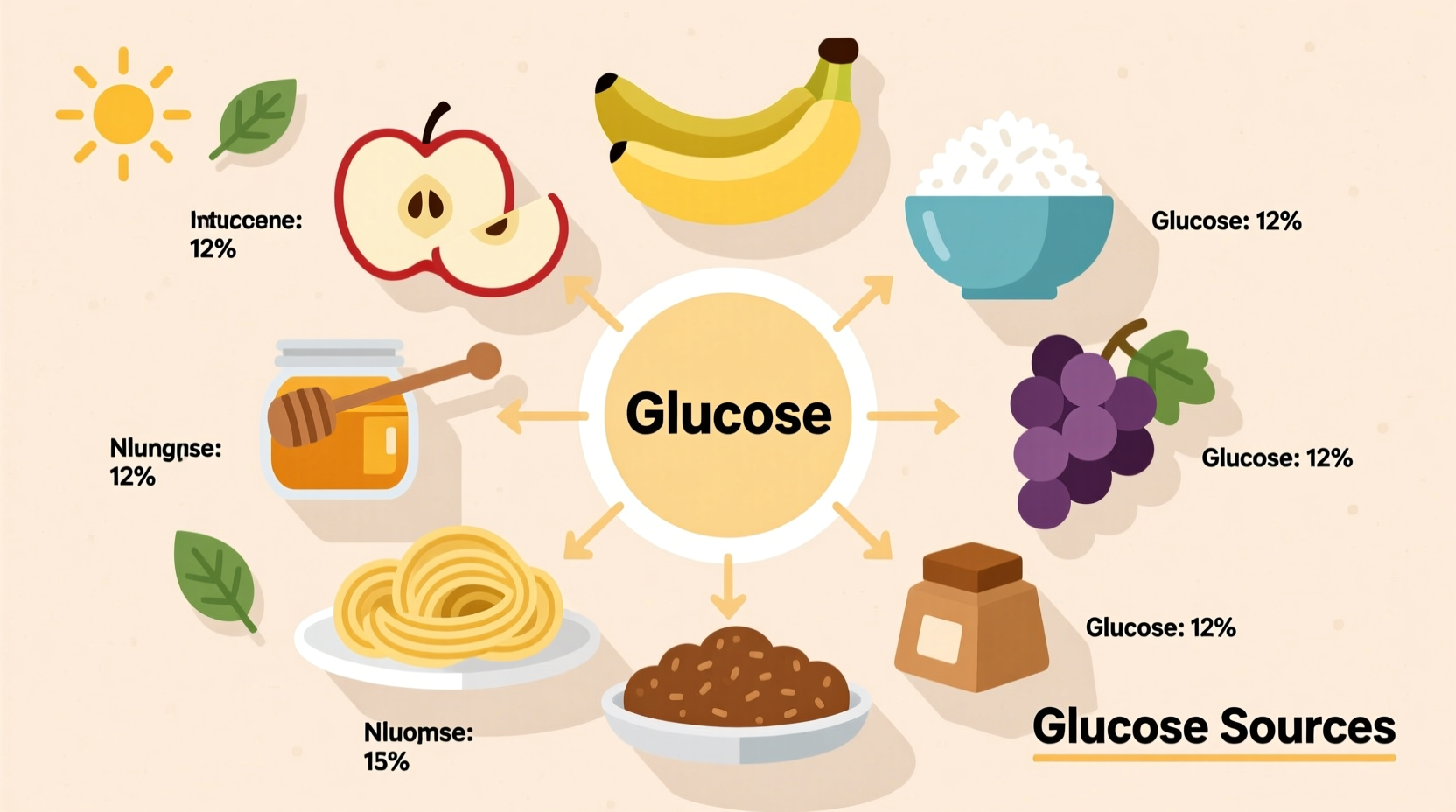When you're looking to understand your dietary glucose intake, knowing exactly which foods contain this essential sugar makes all the difference. Whether you're monitoring blood sugar levels, optimizing athletic performance, or simply making more informed food choices, this guide delivers science-backed information about natural glucose sources in everyday foods.
Understanding Glucose: Your Body's Primary Energy Source
Glucose isn't just another sugar—it's the fundamental energy molecule your body uses to power everything from brain function to muscle movement. As a monosaccharide (simple sugar), glucose stands apart from other carbohydrates because your body can use it directly without further breakdown. Unlike fructose (found primarily in fruits) or lactose (milk sugar), glucose enters your bloodstream quickly, providing immediate energy.
Many people confuse glucose with added sugars, but they're not the same. While table sugar (sucrose) contains glucose, natural glucose appears in whole foods alongside fiber, vitamins, and minerals that moderate its absorption. This distinction matters significantly for blood sugar management and overall health.

Natural Food Sources of Glucose: What You Need to Know
Glucose occurs naturally in various foods, particularly fruits and some vegetables. When you consume carbohydrates, your digestive system breaks them down into glucose, which then enters your bloodstream. Here's where you'll find glucose in its natural forms:
Fruits Highest in Natural Glucose
Fruits contain varying amounts of glucose, often alongside fructose and fiber. The fiber content helps slow glucose absorption, making whole fruits preferable to fruit juices for blood sugar management.
| Food (per 100g) | Glucose (g) | Total Sugars (g) | Glycemic Index |
|---|---|---|---|
| Grapes | 7.2 | 16.3 | 59 |
| Bananas (ripe) | 5.0 | 12.2 | 51 |
| Apples | 2.4 | 10.4 | 36 |
| Watermelon | 3.4 | 6.6 | 72 |
| Oranges | 2.5 | 9.0 | 40 |
Source: USDA FoodData Central (accessed 2025). Values represent approximate glucose content in common foods.
Vegetables Containing Glucose
While most vegetables contain less glucose than fruits, certain varieties provide notable amounts. Root vegetables typically contain more natural sugars than leafy greens:
- Potatoes—particularly sweet potatoes—release glucose as your body digests their starch content
- Beets contain approximately 3.3g of glucose per 100g serving
- Carrots provide about 1.3g of glucose per 100g
- Peas contain roughly 1.0g of glucose per 100g serving
Interestingly, cooking methods affect glucose availability. Boiling vegetables can leach some sugars into water, while roasting concentrates natural sugars through caramelization. This context matters significantly when managing blood glucose levels through diet.
How Your Body Processes Glucose From Different Food Sources
Not all glucose affects your body equally. The rate at which glucose enters your bloodstream depends on several factors:
- Fiber content—Whole fruits with skin contain more fiber, slowing glucose absorption compared to juices
- Food combination—Eating carbohydrates with protein or healthy fats reduces the glycemic impact
- Processing level—Refined grains release glucose faster than whole grains due to removed fiber
- Cooking method—Al dente pasta has a lower glycemic response than overcooked pasta
For example, eating a whole apple provides sustained energy release, while drinking apple juice causes a quicker glucose spike. This explains why nutrition experts consistently recommend whole foods over processed alternatives for better blood sugar management.
Practical Guidance for Managing Glucose Intake
Understanding which foods contain glucose is just the first step. Here's how to apply this knowledge effectively:
Reading Nutrition Labels for Glucose Content
While food labels don't typically list glucose separately, you can identify potential glucose sources by checking:
- Total carbohydrate content
- Sugars listing (though this combines all sugar types)
- Ingredients list for terms like "glucose," "dextrose," "corn syrup," or "honey"
Smart Food Pairing Strategies
Combine carbohydrate-rich foods with protein and healthy fats to moderate glucose release:
- Add almond butter to apple slices
- Pair sweet potatoes with grilled chicken and avocado
- Mix berries with Greek yogurt
Portion Awareness
Even natural glucose sources require mindful portions, especially for those monitoring blood sugar. A standard fruit serving (about 15g carbohydrates) typically equals:
- 1 small apple, banana, or orange
- ½ cup of grapes or cherries
- 1 cup of melon cubes
These practical strategies help you enjoy glucose-containing foods while maintaining stable blood sugar levels throughout the day.











 浙公网安备
33010002000092号
浙公网安备
33010002000092号 浙B2-20120091-4
浙B2-20120091-4